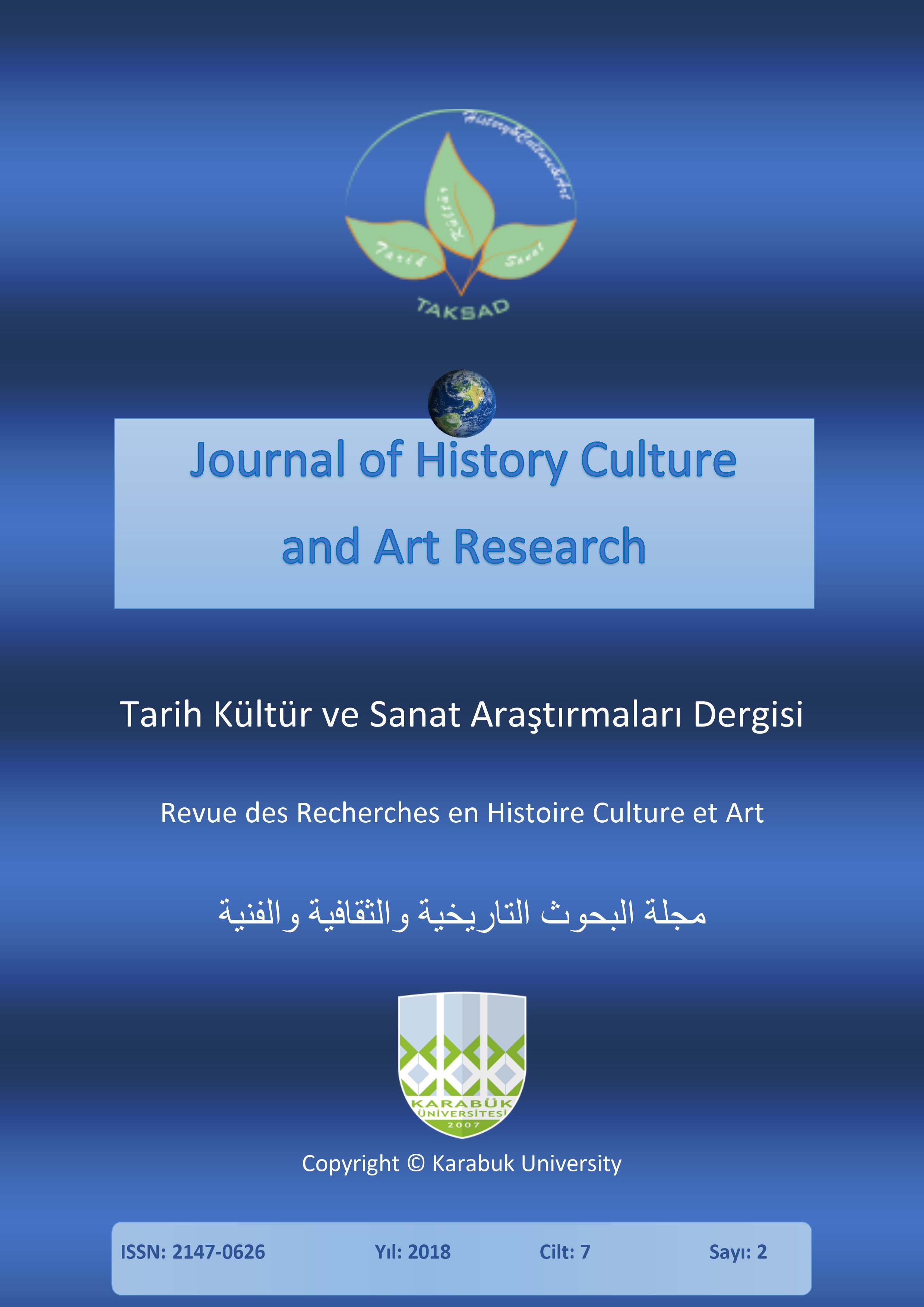Formation of the Talysh Ethnos Worldview under Geoethnic Conservation Area Conditions
DOI:
https://doi.org/10.7596/taksad.v7i2.1604Anahtar Kelimeler:
Talyshes- Worldview- Geoethnic reserve- Talysh culture- Ethnos- Ethnic consciousness- Outlook.Özet
Formation and development of the Talysh ethnic consciousness under the conditions of the Talysh ‘geoethnic reserve’ have been analyzed. Certain ethnoforming elements of the Talysh culture, i.e. factors promoting preservation of the basic constants of the Talysh ethnic consciousness, have been revealed. On the one hand, it is a cult of rocks, stones, groves and trees, and on the other hand it is worship of air, water, land and fire, which with the appearance of Zoroastrianism at first, and later of Shia Muslim, were not absorbed and peripheralized, but filled with new religious and ethical contents presenting moral and esthetic ideals of the Talysh people. The role of a myth and religion as an obligatory early stage of formation of the Talysh ethnic culture has been determined; regularities of formation of the Talysh ethnic consciousness have been shown; steps of ethnogenesis and a world view of the Talysh ethnos have been enlightened. Introduction of strange cultural tradition components could not eliminate the existing valuable attitude of ‘the geoethnic reserve’, but right opposite, they created syncretic environment stimulating evolution of the Talysh ethnic consciousness towards world judgment in the system of moral and ethical images considerably enriching the Talysh ethnos outlook. Having been formed this syncretic environment effected significantly the Talysh ethnos social attitude, as well as, predetermined a prevalent character of religious values in Talyshes spiritual and socio-political life.
Referanslar
Aliev, I. (1989). Essay on the history of Atropatena. Baku: Azerneshr.
Asatrian, G. (2011). Introduction to the history and culture of the Talysh people. Yerevan.
Bromley, Yu. V. (1981). Modern problems of ethnography. Moscow: Nauka.
Bromley, Yu. V. (1983). Essays on the theory of ethnos. Moscow: Nauka.
Chodzko, A. (1842). Specimens of the popular poetry of Persia. London.
Dyakonov, I. M. (1956). History of Media from ancient times to the end of the IV century BC. - M.-L.
Firdausi (1957). Shahnameh. Volume 1. From the beginning of the poem to the legend about Sohrab. Moscow: Publishing House of the USSR Academy of Sciences.
Gumilev, L. N. (2001). Ethnogenesis and the biosphere of the Earth. St. Petersburg: Publishing house "Crystal".
Henning, B. V. (2009). The ancient language of Azerbaijan. Talish: history and culture. Reader. (pp.85-111). - M.: The book house "LIBROKOM".
Khanykov, N. V. (1977). Notes on the ethnography of Persia. Moscow: Nauka.
Levi-Strauss, K. (1985). Structural anthropology. Moscow: Eastern Literature.
Mamedov, A. A. (eds.) (2012). Talysh legends. M.: LENAND.
Marr, N. Ya. (1922). Talysh. Reports of the Commission for Studying the Tribal Composition of the Population of Russia. Petrograd. 1922.
Miller, B. V. (1953). The Talysh language. Moscow: Publishing House of the USSR Academy of Sciences, 1953.
Morgan, J. De. (1896). Recherches prehistoriques dans le Talyche russe (Lenkoran). Mission Scientifique en Perse. T. IV. Recherches archeologiques. Paris.
Riss, P. F. (1855). About Talyshinians, their way of life and language. Notes of the Caucasian Department of the Imperial Russian Geographical Society. Book III. Tiflis.
Talysh: History and culture. Reader (2009). - Moscow: The book house ‘Librocom’.
Yarshater, E. (1993). Azari or the Ancient language of Azerbaijan. Maryland, USA.
İndir
Yayınlanmış
Nasıl Atıf Yapılır
Sayı
Bölüm
Lisans
Tarih Kültür ve Sanat Araştırmaları Dergisi'nde yayımlanan tüm çalışmalar Creative Commons 4.0 CC-BY lisansı ile lisanslanmıştır.
Bunları yapmakta özgürsünüz:
- Bu eseri her boyut ve formatta paylaşabilir — kopyalayabilir ve çoğaltabilirsiniz.
- Materyalden Adapte et — karıştır, aktar ve eserin üzerine inşa et
- her türlü amaç için, ticari amaç da dahil
Alttaki şartlar altında:
Atıf — uygun bilgiyi, lisansa linki, and ve değişiklik yapıldıysa değişiklik bilgisinivermelisiniz. Sizi veya kullanımınızı lisansörün onayladığı bilgisini içermemek kaydıyla, size uygun şekilde bu işlemleri gerçekleştirebilirsiniz.
AynıLisanslaPaylaş — Eğer materyali karıştırdınızsa, aktardınızsa ya da materyalin üzerine çalıştınızsa, ancak aynı lisans ile dağıtabilirsiniz.
- Ek sınırlamalar yoktur — Lisansın izin verdiği hakları başkaları üzerinde kanunlarla ya da teknolojiyikullanarak sınırlayamazsınız.







